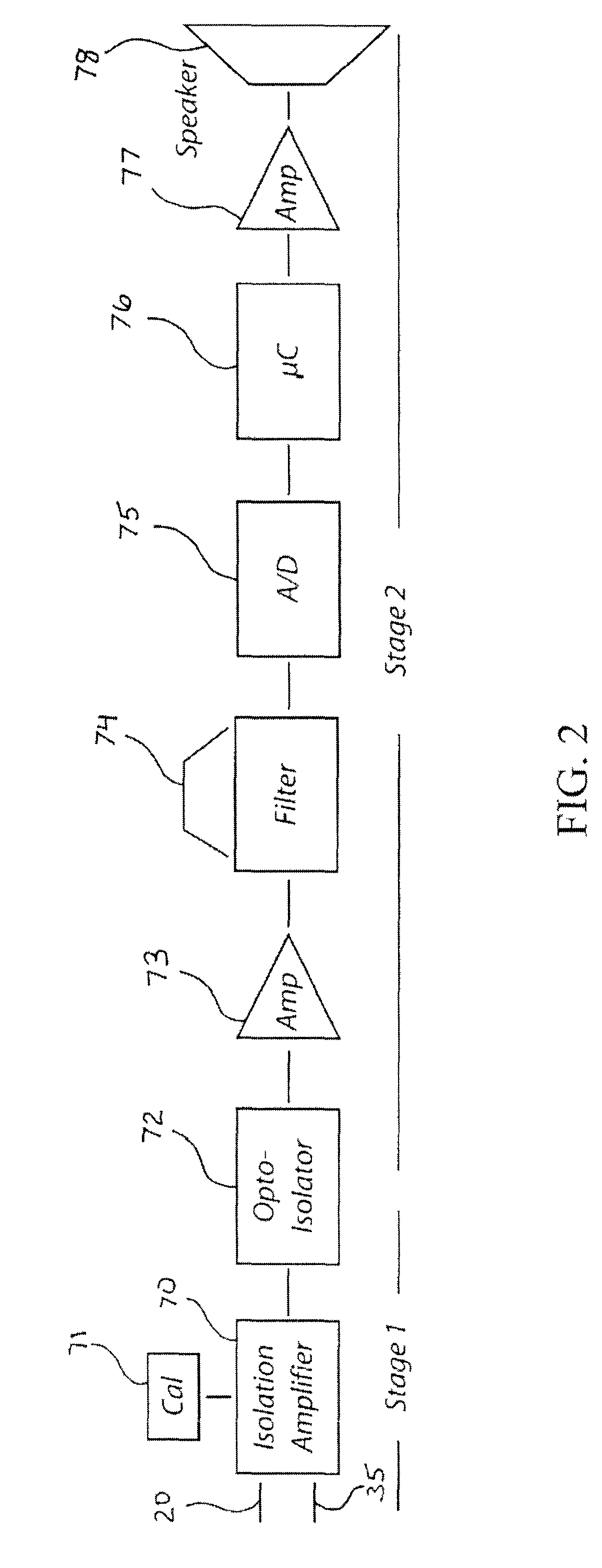Methods and devices for differentiating between tissue types
a tissue type and differentiating technology, applied in the field of ocular surgery, can solve the problems of difficulty in differentiating between tissue types, and achieve the effects of high electrical impedance, low impedance, and high impedan
- Summary
- Abstract
- Description
- Claims
- Application Information
AI Technical Summary
Benefits of technology
Problems solved by technology
Method used
Image
Examples
Embodiment Construction
[0018]The subject invention provides embodiments of medical instruments and / or devices capable of identifying which type of in vivo tissue is in contact with the instrument or device and providing one or more visible and / or an audible signals to the use of the device. More specifically, the subject invention pertains to a retinal rake, or similar device, capable of providing one or more visible signals and / or audible signals to a surgeon to more clearly identify which type of in vivo tissue(s) is in contact with the device. The subject invention also provides methods of uses for the instruments described herein.
[0019]The subject invention is particularly useful in the field of optical surgical procedures, and in particular for devices used for the treatment and / or removal of epiretinal membranes (ERMs). However, a person with skill in the art will be able to recognize other uses that would be applicable to the devices and methods of the subject invention. While the subject applicati...
PUM
 Login to View More
Login to View More Abstract
Description
Claims
Application Information
 Login to View More
Login to View More - R&D
- Intellectual Property
- Life Sciences
- Materials
- Tech Scout
- Unparalleled Data Quality
- Higher Quality Content
- 60% Fewer Hallucinations
Browse by: Latest US Patents, China's latest patents, Technical Efficacy Thesaurus, Application Domain, Technology Topic, Popular Technical Reports.
© 2025 PatSnap. All rights reserved.Legal|Privacy policy|Modern Slavery Act Transparency Statement|Sitemap|About US| Contact US: help@patsnap.com



